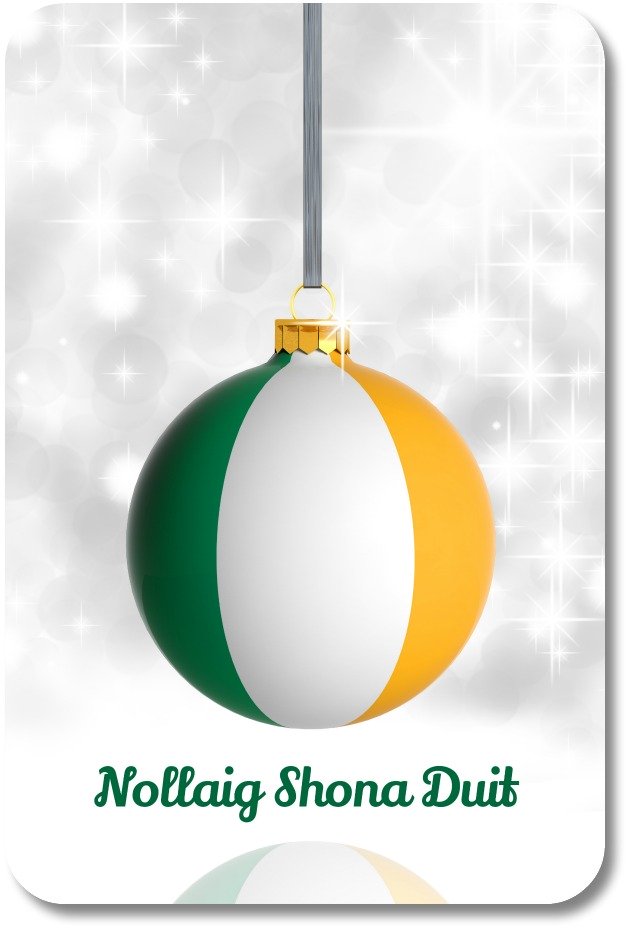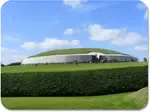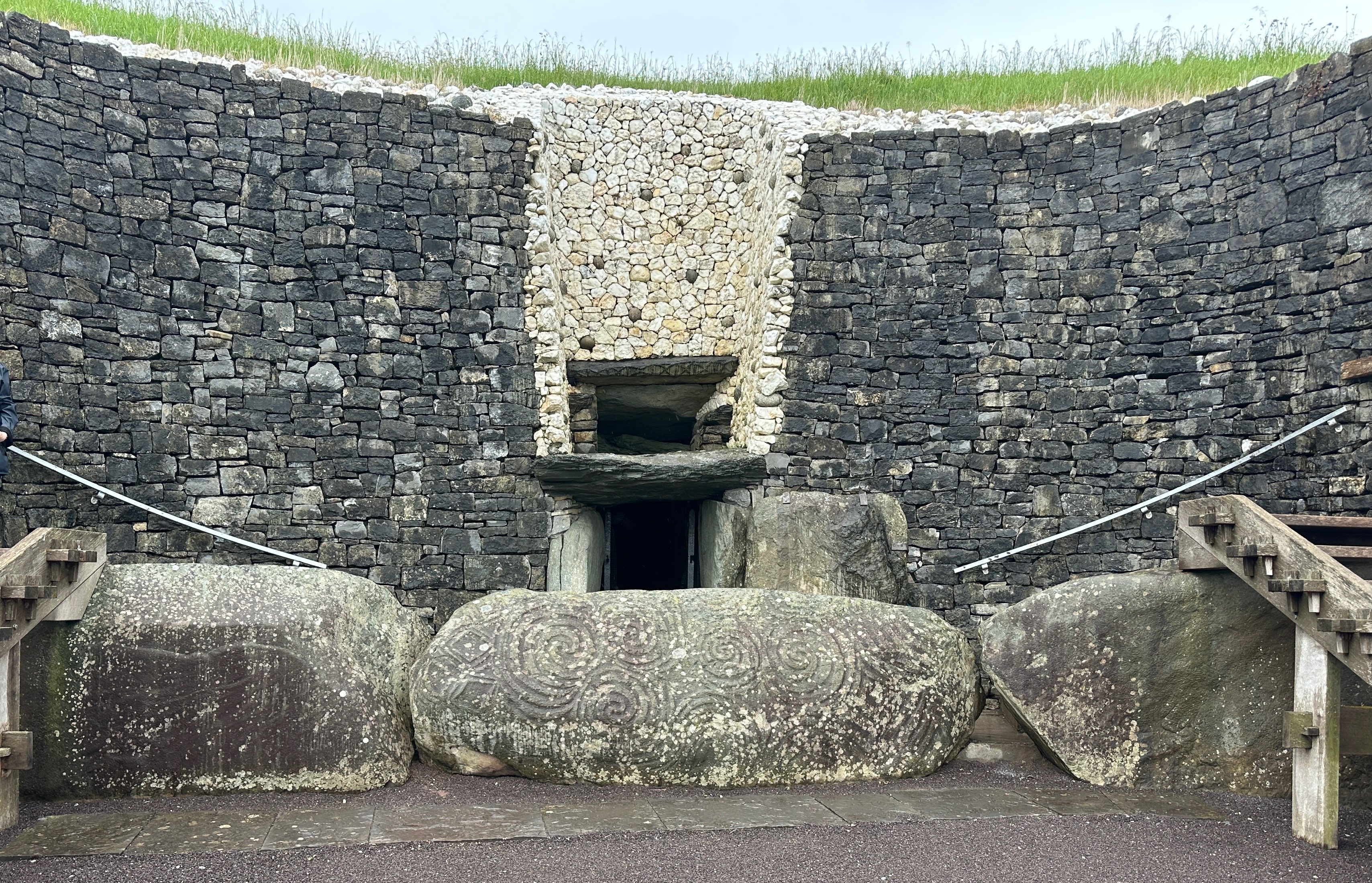- Home
- Irish Culture and Customs
- Irish Wedding Ideas
- Irish Wedding Cake
Irish Wedding Cake: Can You Think of A Tastier Way to Express Your Irish Side?
Of the many, many Irish wedding expressions you can choose from, the Irish wedding cake is certainly one of the tastiest! With a creative design, it can also be a memorable way to express your Irish side during one of life's most cherished moments.
We All Have a Unique and Personal "Irish Side."
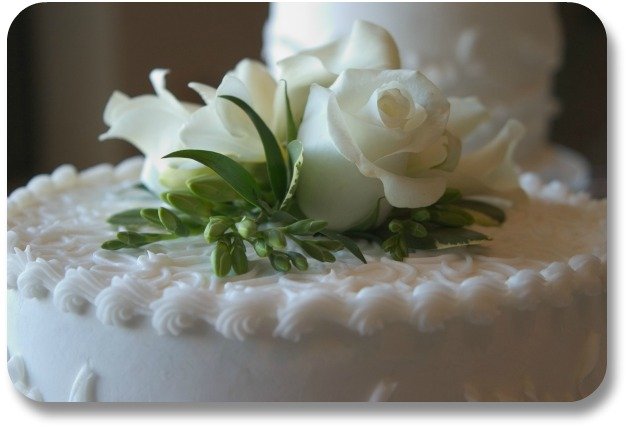
Why? Well, there are a number of Irish traditions for what goes in, on, and around the wedding cake... There are also Irish traditions for what happens to the cake before and after the wedding. Below we'll take a closer look at this delicious Irish expression.
Irish Wedding Cake: The Top Layer...
Traditionally the newlywed couple kept the top layer of their wedding cake, ate a small slice at their first anniversary and took the rest at the christening of their first child.
Presumably one of the reasons the toplayer stayed edible between wedding and christening / anniversary was because it was in fact a fruitcake (as we describe in more detail below).
Not only did the couple serve the top layer at the christening, the parents often sprinkled the head of the baby with a few crumbs from the cake as a symbol of their hopes and desire for the newborn to prosper and live a long life.
A Symbol of Fertility and Luck...
In very early Ireland, people served little cakes made of eggs, white flour and honey at special occasions. For some reason, it became tradition to break these small cakes over the head of the bride for ... good luck and fertility (don't ask us why).
The guests then gathered up the crumbs and saved them as a good luck charms.
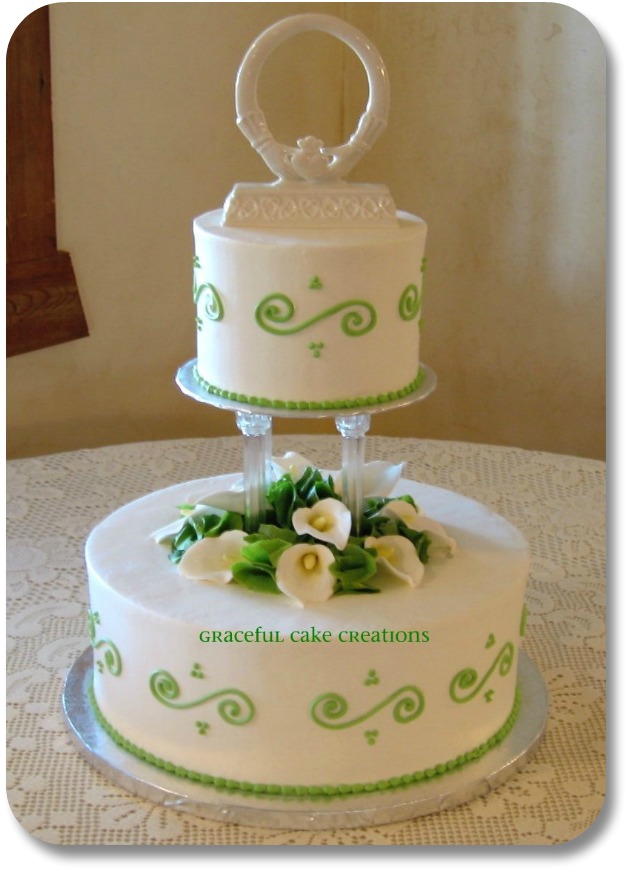
The Traditional Irish Wedding Cake...
As cooking techniques developed and the cuisine of the area changed, these cakes probably changed into what we now consider traditional Irish wedding cake.
Most Irish wedding cakes likely contained honey—rather than sugar—and the top layer was traditionally a fruitcake liberally cured with Irish whiskey, to help preserve it and keep it moist.
The fruitcake was filled with raisins—dried grapes—candied fruit and nuts. The fruit was candied by soaking it in honey as a preservative.
The creation of the wedding cake began well before the wedding itself since it required drizzling Irish whiskey over it, wrapping it and “curing” the wrapped cake over several weeks.
Even though the bottom layers were usually a different form of cake - pound cake for example, they too often had liberal amounts of whiskey used to cure the cake before the baker frosted it.
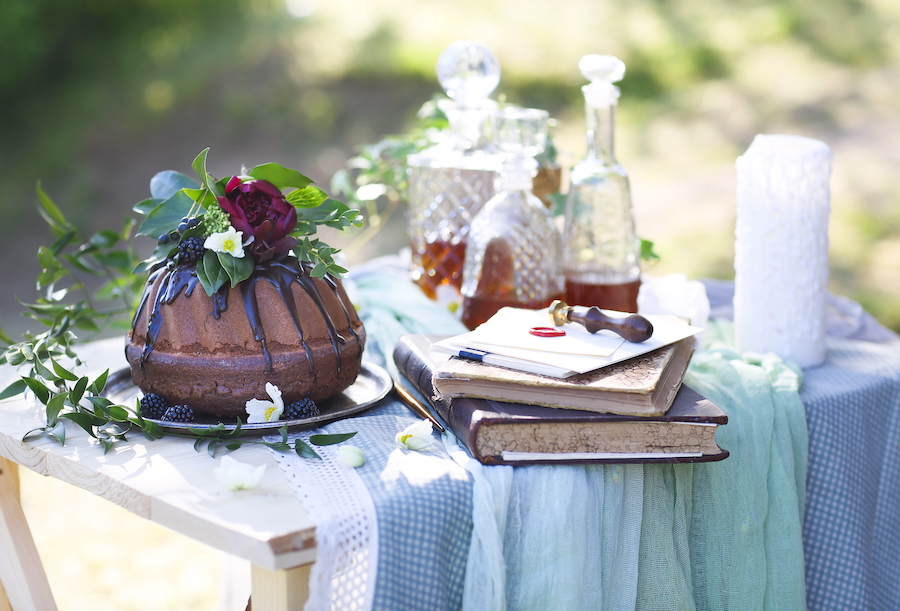
The Frosting...
While butter cream frosting might be the choice of many an Irish bride today, traditional cakes were far more elaborate, probably because of challenges with preservation.
Normally there was a thin layer of jam or apricot puree around the wedding cake, the baker followed with a layer of marzipan and finally topped it off with a poured layer of fondant icing that dried hard, making it easier to decorate.
In some cases, there was only a layer of fondant. The cake traditionally was white, but today, many brides choose to decorate their cakes with green, adding claddagh rings, trinity knots and shamrocks as motifs.
Cutting the Cake
Originally, the cake cutting was all about the bride. When the bride cut the cake, it forecast her soon to be lost virginity.
Through
time, the groom also became part of the ceremonious cake cutting.
Sharing a piece of the cake by the couple symbolized their intent to
share a life together.
Want More Irish Wedding Ideas?
Visit our main section on Irish wedding ideas here!
More Fun With Irish Expressions:
Your Irish Expressions Playbook
Congratulations on learning more about the Emerald Isle and discovering what we like to call your "Irish Side." You may be thinking "I'd love to actually VISIT Ireland but that's really not in the cards right now. What am I supposed to do with the stuff I just learned?"
Well never fear! Since 2007 we have collected all of the best printable, shareable resources we could find, to help you put your new knowledge of Ireland to good use. We've put them all together in a single download we call "Your Irish Expressions Playbook," which contains over 100 pages of games, puzzles, recipes, songbooks, quizzes, travel guides and much, much more.
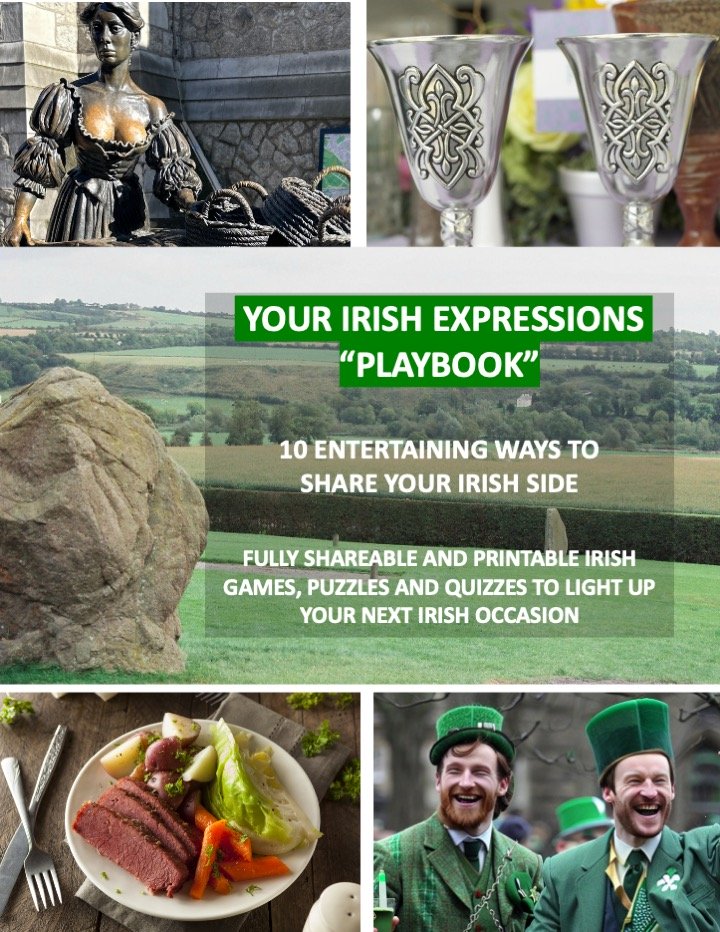
Purchase them ALL for one small price, print as many copies as you like and share them with your friends - with no limitations! But order soon - we are already adding to the Playbook for future editions and this price will not last long.
Oh, want one more reason to order right away? If you buy YOUR copy of the Playbook now, you will be allowed to upgrade to any new future edition for FREE.
PRO TIP: Be sure to click the 'return to merchant' button following checkout, to ensure you are routed to the page where you can download your Playbook. Any issues? Just reach out to us at support@irish-expressions.com and we will make it right.
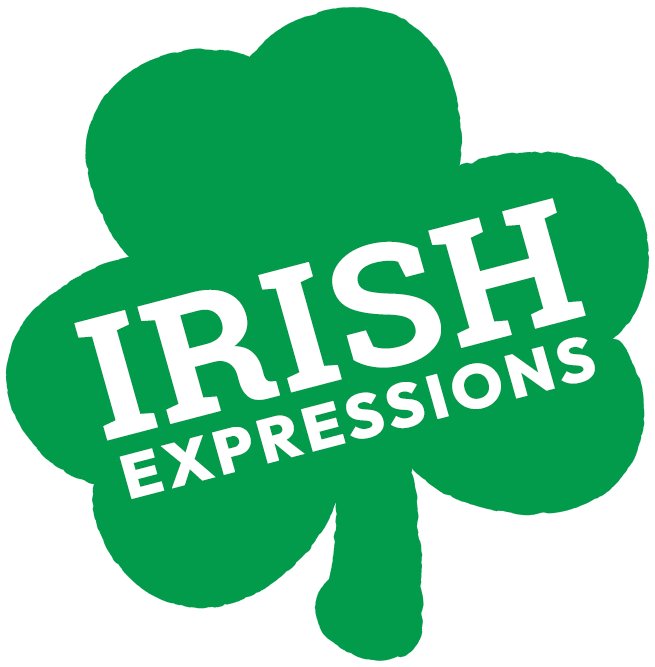
Please Share Your Feedback
Did we miss anything? Is there a topic you would like us to cover in the future? Tap HERE to let us know!
